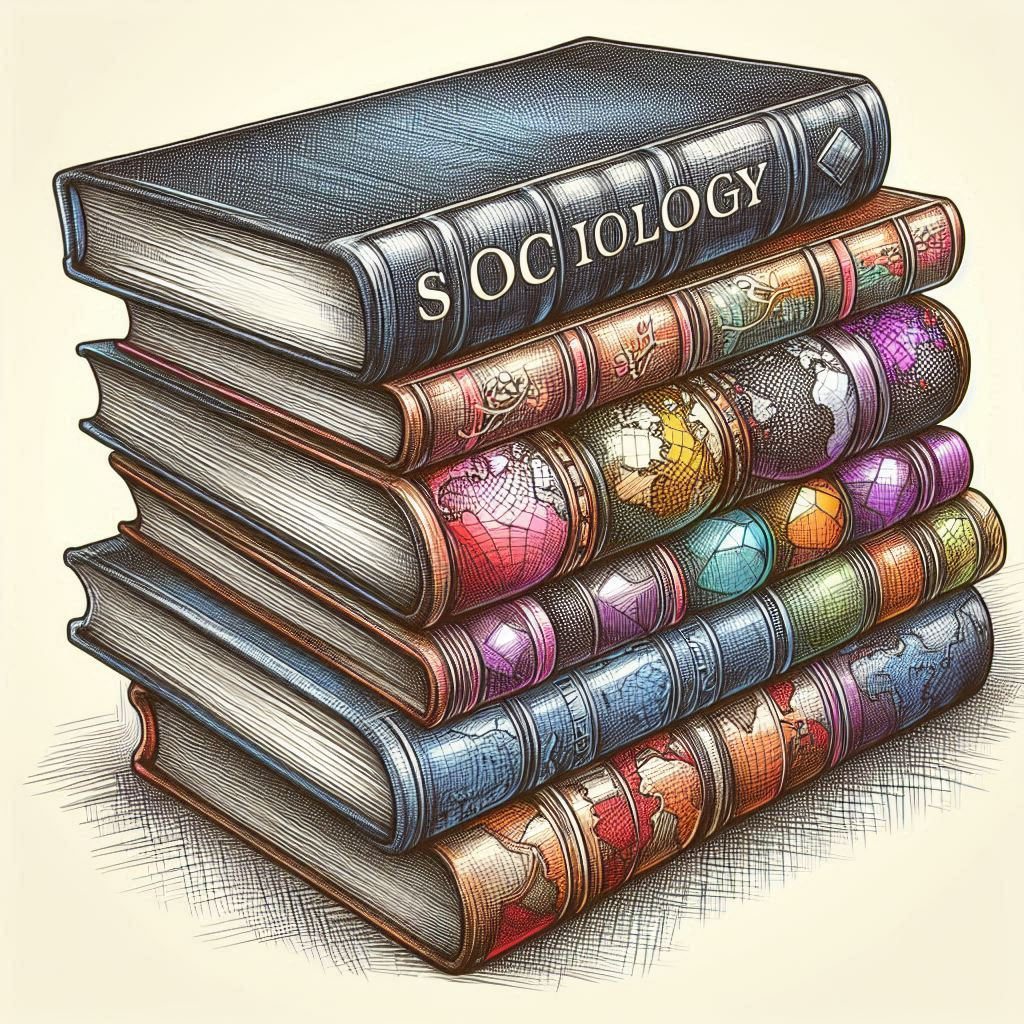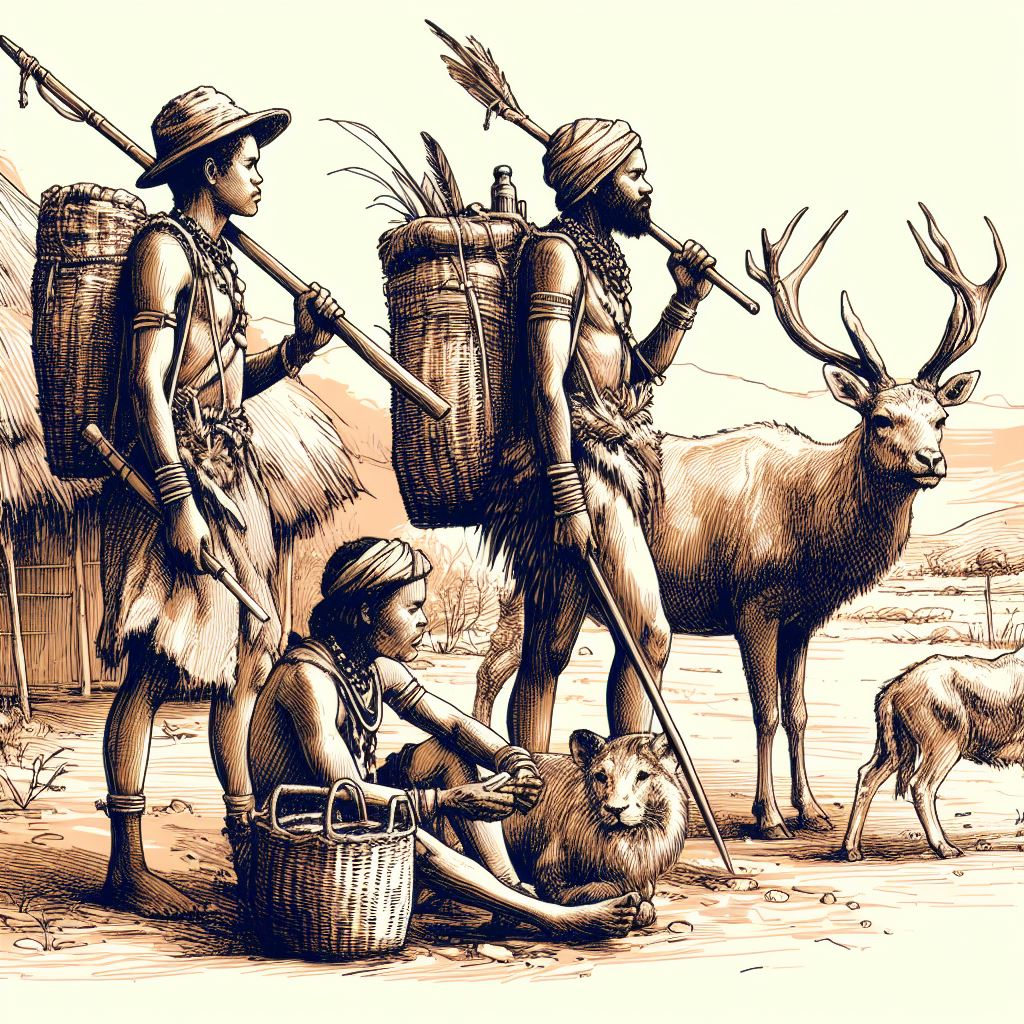In sociology, the concept of association occupies a central place in understanding how individuals come together to form organized groups that pursue common purposes. An association is more than a casual gathering—it is a deliberate, structured union of people bound by shared goals, interests, or activities. From small clubs and neighborhood committees to large professional organizations and political parties, associations serve as vital links between the individual and the broader society.

Unlike more diffuse social categories, associations typically have explicit rules, roles, and structures that guide member interaction. Classical sociologists recognized associations as distinct social forms: for example, Tönnies’ concept of Gesellschaft (often translated “association” or “society”) and Simmel’s idea of society as an “association of free individuals” both emphasize organized groupings based on impersonal or rational bonds. In modern scholarship, associations are also studied as arenas of civic engagement, social capital, and collective action (as Alexis de Tocqueville famously noted, Americans have mastered the “art of association” in public life).
Definitions of Association
MacIver and Page (1949)
“An association is an organization deliberately formed for the collective pursuit of some interest or set of interests, which its members share.”
Bogardus (1960)
“An association is an organization of people who agree to work together for some common purpose.”
Ogburn and Nimkoff (1940)
“An association is a working together of people to achieve some purpose.”
Ginsberg (1932)
“An association is a group of social beings related to one another by the fact that they possess or have instituted in common an organization with a view to securing a specific end or specific ends.”
Fairchild (1944)
“An association is a group organized for the pursuit of a limited number of goals.”
Characteristics of Association
1. Conscious and Deliberate Organization
An association does not emerge by chance—it is formed intentionally by individuals who recognize a shared interest or goal. The formation involves planning, decision-making, and structuring of roles, rather than mere spontaneous gathering. Example: A political party is formed with a constitution, leadership, and a defined political agenda.
2. Common Purpose or Interest
The unifying force of an association is a specific common purpose—economic, political, cultural, religious, recreational, or otherwise. This distinguishes associations from looser social groups (e.g., a casual friend circle) which may lack a defined objective. Even if members have different personal motives, they unite under a shared organizational goal. Example: A labor union aims to protect workers’ rights, even though individual members may have varying personal priorities.
3. Formal or Informal Structure
Associations typically have a structure, which can be: a) Formal: Written constitution, defined offices, official membership rules (e.g., professional associations); b) Informal: Minimal written rules, flexible leadership, but still organized toward a goal (e.g., small local activism groups). Structure allows coordination of activities, role allocation, and conflict resolution.
4. Definite Membership
Membership is clearly defined, either through voluntary enrollment or automatic inclusion (in case of involuntary associations). Rules specify who can join, how to join, and how membership can end. Membership criteria may be based on skill, interest, geography, or eligibility (e.g., bar associations for lawyers only).
5. Rules and Regulations
Every association operates under a set of norms—written (formal) or unwritten (customary)—that govern behavior, rights, and duties of members. These rules provide predictability and stability, ensuring coordinated action toward the shared goal. Example: A cooperative society has bylaws for electing office-bearers and distributing profits.
6. Cooperation and Coordination
The essence of an association lies in cooperation—members work together to achieve what they could not achieve individually. Coordination ensures that efforts are not wasted, and disputes are resolved within the group’s framework. Example: In a sports association, teams coordinate through leagues, fixtures, and rules.
7. Duration and Continuity
Associations generally have a degree of permanence—they are meant to exist beyond a single event. Some may be short-lived (formed for a specific cause) while others are permanent organizations lasting decades or centuries. Example: The International Red Cross has operated continuously since 1863.
8. Legal or Social Recognition
Many associations seek legal registration to gain official status, rights, and protections (e.g., the ability to own property, sue, or be sued). Even without legal status, an association gains social recognition through acceptance and legitimacy in the community.
Overview of Characteristics
| Characteristic | Description | Example |
| Conscious Formation | Deliberately created for a purpose | Environmental NGO |
| Common Purpose | Unifying goal or interest | Labor union |
| Structure | Formal or informal organization | Political party |
| Definite Membership | Defined criteria for joining | Professional guild |
| Rules & Regulations | Governing norms for interaction | Cooperative bylaws |
| Cooperation | Members work together for goals | Farmers’ association |
| Continuity | Exists over time beyond one event | Rotary Club |
| Recognition | Legal or social acceptance | Registered charity |
Historical Perspectives on Association
Early sociologists laid the groundwork for understanding associations as fundamental to social structure. Ferdinand Tönnies (1887) distinguished Gemeinschaft (“community”) and Gesellschaft (“association/society”) as two ideal types of social organization. In his model, Gemeinschaft refers to social ties rooted in kinship or shared identity, whereas Gesellschaft denotes modern, impersonal associations formed by contractual or self-interest ties. Tönnies described a Gesellschaft as an “artificial construction of an aggregate of human beings which superficially resembles the Gemeinschaft” but in which individuals “remain separate in spite of everything that unites them”. In other words, Gesellschaft (or association) is marked by self-interest and formal organization, rather than the organic unity of community. Sociological texts summarize Tönnies’ key insight: in a Gesellschaft or association, the larger group never takes precedence over each individual’s own interest, and shared social mores are weaker than in Gemeinschaft. Thus Tönnies cast modern associations as voluntary, goal-driven groups that contrast with traditional communal bonds.
Georg Simmel similarly emphasized the active role of association in social life. He famously wrote that “society is an association of free individuals” and insisted that sociology should study the forms of association that connect people rather than treating society as a fixed substance. For Simmel, the patterns of interaction (e.g. exchange, conflict, cooperation) among autonomous individuals create society itself. In his view, each new mode of association (for instance, bureaucratic organizations, interest groups, or casual networks) constitutes a novel form of social life that must be analyzed on its own terms.
Émile Durkheim contributed to the concept by insisting that social facts emerge from associations of individuals. Durkheim argued that when people associate, they produce a “social reality of a new kind” greater than the sum of individual parts. He maintained that the very fact of human association is fundamental: “the fact of association appears to be the most obligatory of all, for it is the origin of all other obligations. We are born into a family, granted a nationality, and given an education… and it is these associations which in turn determine those more ‘voluntary’ obligations” to which we consent. In other words, Durkheim saw elementary associations (like family, religion, nation) as the source of social norms and duties, providing the framework within which individuals acquire further social ties.
Max Weber did not define “association” in a single statement, but his analysis of modern organizations treats voluntary associations as a key category. Weber used the broad term Verband (organization) to include enterprises and Vereine (voluntary associations) alongside institutions (Anstalten) like the state or church. In Weber’s schema, a voluntary association (Verein) is any formally organized group whose members join by choice to pursue common ends. Weber showed how such associations exemplify the rational-legal organization of modern life. His typology of social action and authority implies that associations, like bureaucracies, rely on formal rules and are shaped by the rational pursuit of goals. Thus Weber highlighted the way associations (even democratic clubs or unions) are “legal-rational” structures that link individual actors into larger coalitions.
In sum, classical sociology viewed associations as voluntary, organized groupings that bridge personal ties and impersonal institutions. Tönnies and Durkheim emphasized how associations generate collective obligations; Simmel focused on the interactional patterns of associations; Weber noted their bureaucratic form. Over time, these perspectives established the idea that associations are distinct kinds of social entities – organized by conscious design rather than by fate or local habit – and that they play a critical role in the fabric of society.
Modern Perspectives on Associations
Contemporary sociologists have built on these foundations to explore associations as central to civil society and social networks. Alexis de Tocqueville’s early observation that Americans excelled at forming voluntary associations foreshadowed the modern view of associational life as a measure of civic engagement. Tocqueville famously called this collective capacity an “art of association”. In recent decades, scholars have tied associations to social capital – the trust and cooperative norms generated through civic participation. Robert Putnam (2000), for example, documented the ways in which membership in voluntary organizations (“Bowling Leagues, PTAs, etc.”) fell dramatically in late 20th-century America, warning of a “collapse in civic, social, [and] associational” life. He argued that dense associational networks promote trust and reciprocity, which in turn support effective democracy and community well-being. In Putnam’s view, associations (“features of social organizations, such as networks, norms and trust”) facilitate collective action for mutual benefit. While Putnam’s approach focuses on broad trends, other contemporary work highlights the diversity of associations in modern society – from environmental NGOs and labor unions to online interest groups – and their roles in mobilizing citizens.
Sociologists today also consider how associations are embedded in larger social structures. They study how associations differ by scale and sector (e.g. ethnic associations, professional associations, transnational advocacy networks) and how digital communication is creating new forms of association (such as online communities). Some scholars examine the role of associations in multicultural societies, or how they intersect with political institutions. A common modern theme is that associations provide a “middle ground” between individuals and the state, enabling people to cooperate on specific issues without direct government intervention. This view echoes classical ideas: just as Durkheim saw associations as sources of collective morality, modern theorists see them as engines of social capital and public participation. Even with new technologies, the basic insight remains that voluntary associations are vital nodes of social interaction and cohesion in complex societies.
Types of Associations
The main typologies of associations include:
- Formal vs. Informal Associations:
- Formal associations have written rules, defined structures, and official roles (e.g., registered NGOs).
- Informal associations are loosely organized, without formal regulations (e.g., friendship networks, ad hoc cooperatives).
- Open vs. Closed Associations:
- Open associations are accessible to anyone who voluntarily wishes to join, without restrictive membership criteria.
- Closed associations do not allow new members to join, or have rigid and highly selective procedures for membership.
Across these typologies, the defining feature of an association remains that it is a network of social ties organized around a specific purpose, with some degree of cohesion and continuity. Other examples of typologies of associations include:
- Political Associations: Bharatiya Janata Party (BJP), Indian National Congress, Communist Party of India
- Religious Associations: Arya Samaj, Vishva Hindu Parishad, The Society of Jesus
- Students’ Associations: Akhil Bharatiya Vidyarthi Parishad (ABVP), National Students’ Union of India (NSUI)
- Labour Associations: All India Trade Union Congress, Bharatiya Mazdoor Sangh
- Professional Associations: The Bar Council of India, Indian Medical Association, Teachers’ Associations
- International Associations: Amnesty International, Rotary International
Role of Associations in Social Organization
Associations play a crucial role in how societies organize themselves and how individuals interact. By bringing people together for shared goals, associations mediate between the personal and the institutional. They serve as vehicles of socialization, transmitting norms and identities: for instance, membership in an association may inculcate political values or professional ethics. Durkheim’s insight that “all societies are born of other societies” reminds us that people enter a web of existing associations (family, religion, schooling) that shapes their subsequent choices. In modern life, associations complement formal institutions (like the state or economy) by allowing citizens to pursue specific interests – whether economic (labor unions), cultural (ethnic associations), or civic (neighborhood groups).
Associations also facilitate social cohesion and trust. As Putnam argues, when individuals regularly interact in associations, they develop reciprocity and generalized trust toward others. This “social capital” spreads beyond the group, making cooperative norms more widespread in society. Tocqueville similarly noted that Americans’ habit of forming associations contributed to a strong civil society and sense of civic virtue. Even informal associations (like online interest communities) can knit diverse individuals into networks that share information and resources. In short, associations create linkages across society: they bind individuals into a collective while also empowering that collective to act.
On the other hand, associations reflect social differentiation. Weber showed that formal associations are organized hierarchically and rationally, often mirroring bureaucratic institutions. Today’s sociology examines how associations reflect class, gender, or ethnic divisions – for example, who joins which clubs and how that affects social inequality. Associations can also be arenas of conflict: social movements are essentially temporary associations formed to challenge the status quo. Thus associations are not only integrative but also dynamic sites where social change can occur.
Associations vs. Related Concepts
Firstly, all associations are a kind of social group, but not all social groups are associations. A group simply means people who interact or share something in common, but an association is a deliberately organized group formed for a specific purpose, with agreed rules and membership. For example, a crowd at a concert is a group of people in the same place, but they do not form an association because there is no formal purpose, structure, or ongoing membership.
Association vs. Community:
A community is related but different. Communities, in Tönnies’ sense of Gemeinschaft, grow more naturally out of location, kinship, or shared culture. They are not just about one activity or interest but involve many overlapping relationships—family, neighbors, traditions, and local customs—that meet a wide range of members’ needs. Communities are usually something people are born into or become part of through residence. In contrast, associations are goal-focused and voluntary, and people join them by choice to meet a specific interest or objective.
Association vs. Institution:
Institutions are not single groups but enduring systems of rules, norms, and roles that organize major areas of social life, such as family, education, religion, law, or the economy. They exist across generations and shape behavior for society as a whole. An institution is not joined in the way one joins an association—it is part of the larger social framework. An association can be part of an institution (for example, a medical association operates within the institution of medicine), but institutions are much broader and more permanent.
In short, associations are concrete, organized groups that exist between individuals and institutions in the social structure. They are different from broader, less formal social groups, place-based and multi-dimensional communities, and society-wide institutions, because they have specific membership, a defined purpose, and an organized structure.
| Aspect | Association | Community | Institution |
| Definition | An organized group of people voluntarily united for a specific purpose or activity. | A group of people living in a particular area or sharing common identity, values, and way of life. | Established patterns of behavior and social arrangements governing a specific sphere of social life. |
| Basis of Formation | Voluntary agreement or shared interest. | Shared territory, culture, or social bonds. | Social necessity for regulation of key societal functions. |
| Purpose | Achieving specific goals (e.g., political, religious, professional). | Maintaining social cohesion, mutual support, and cultural identity. | Regulating and organizing activities in areas such as family, education, religion, economy, and politics. |
| Structure | May be formal (rules, hierarchy) or informal. | Often informal and organic, though may have some formal structures. | Highly structured, with established norms, roles, and rules. |
| Membership | Selective or open, usually voluntary. | Natural or ascribed through birth/residence. | Not “joined” in the same sense—individuals participate because they are part of society. |
| Examples | Political party, trade union, Rotary Club. | Village community, neighborhood, ethnic group. | Family, education system, legal system, religious institution. |
| Duration | May be temporary or permanent, depending on purpose. | Usually long-term and enduring. | Long-term, often transgenerational. |
| Key Sociological References | MacIver & Page (1961): Association is an “organization of people for a specific end.” | Tönnies’ Gemeinschaft: traditional, close-knit community. | Durkheim: Institutions are “the rules of conduct that society imposes.” |
Conclusion
The concept of association in sociology thus covers the organized groupings through which people cooperate and form society. From Durkheim’s focus on how associations create social facts, to Tönnies’ contrast of communal and associational life, to Weber’s analysis of rational organizations, sociologists have long recognized that associations are a defining feature of social structure. Today, associations continue to be seen as vital sites of social interaction, civic participation, and network formation. Associations remain distinct from other social entities (broader communities or formal institutions) by virtue of their explicit purpose, membership rules, and relative voluntariness. In every era, understanding the nature and function of associations is key to understanding how societies organize themselves.


